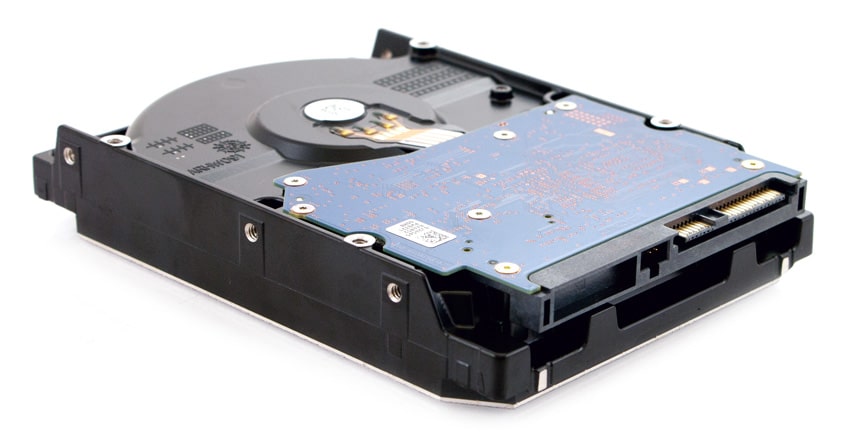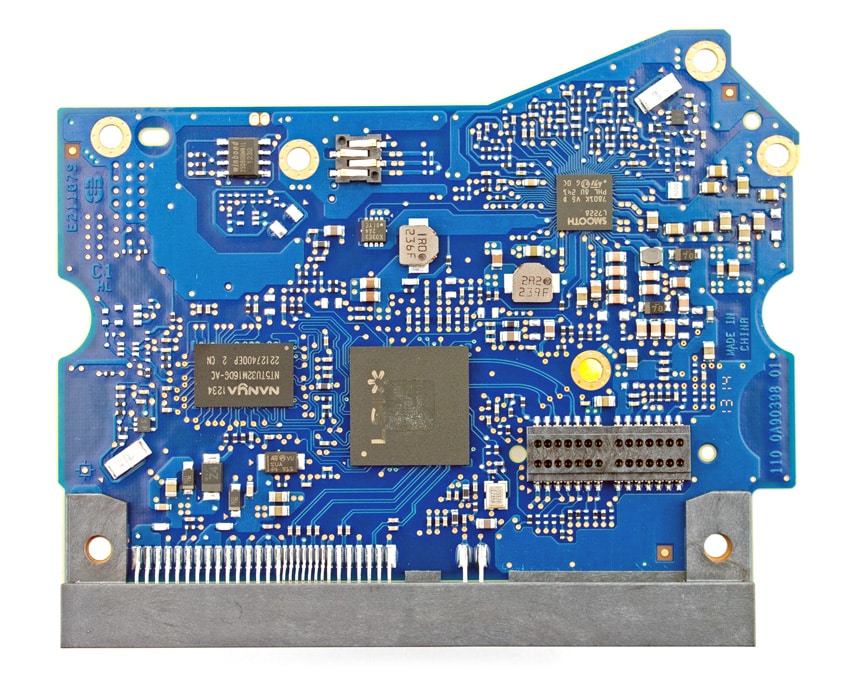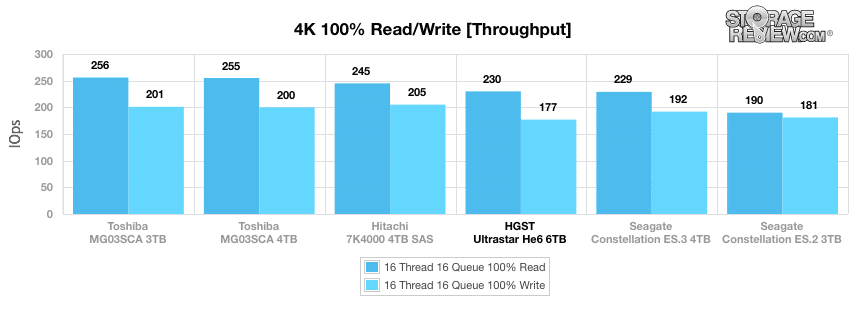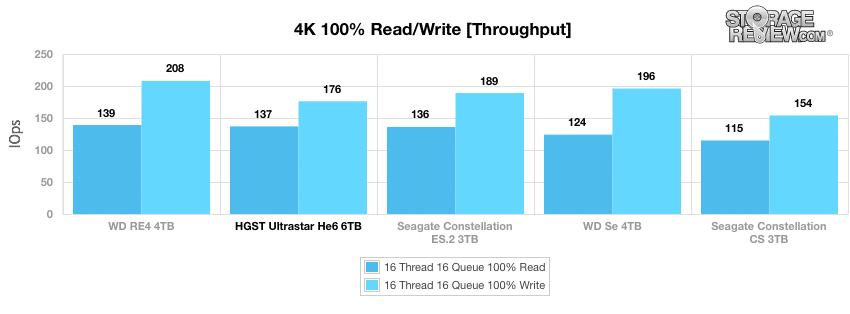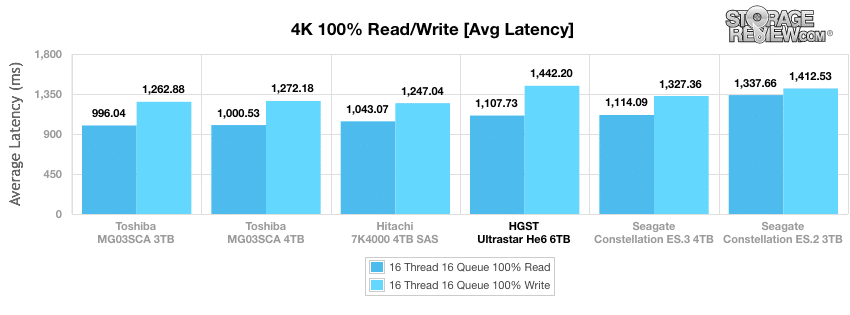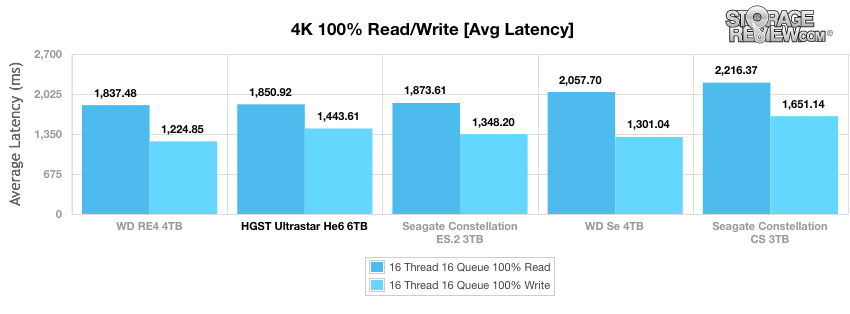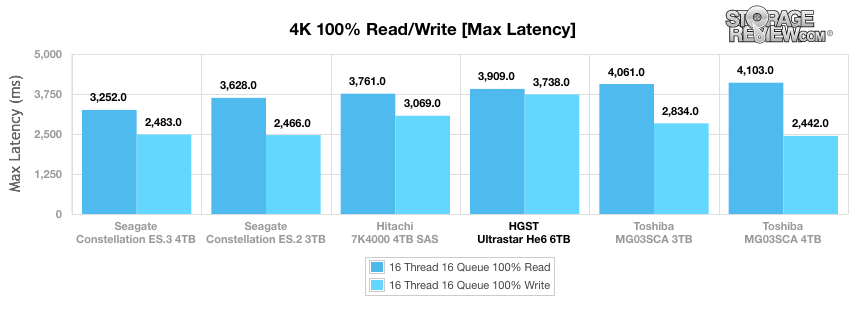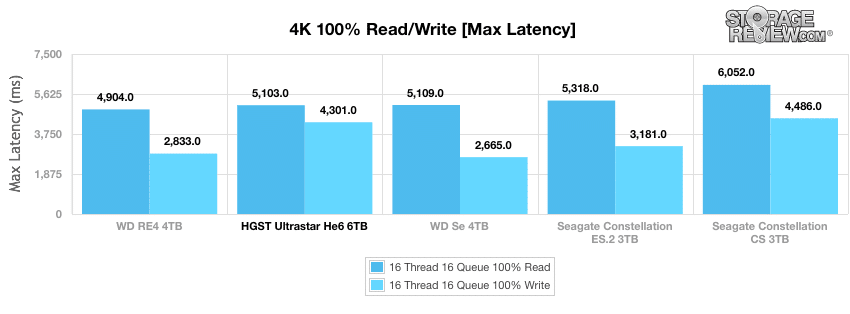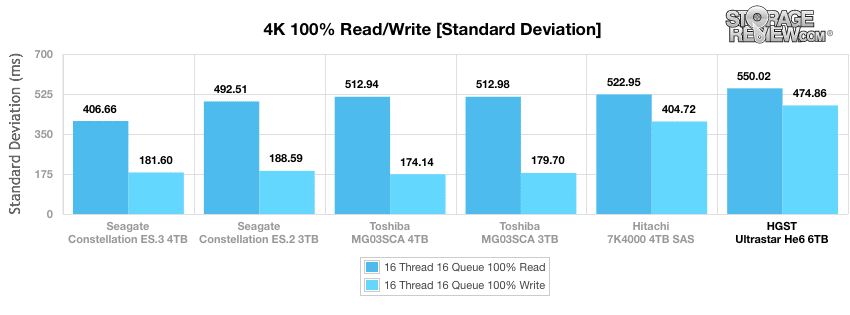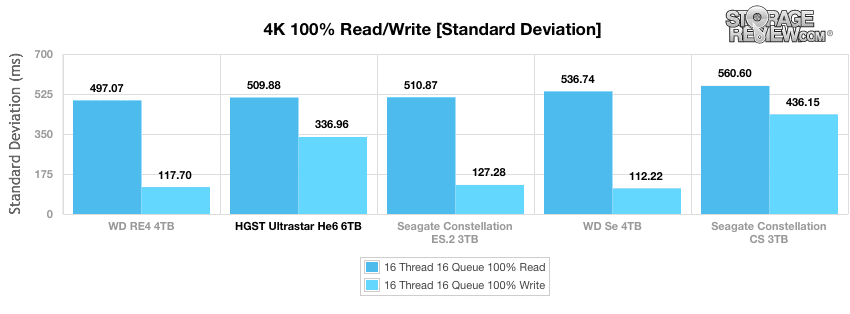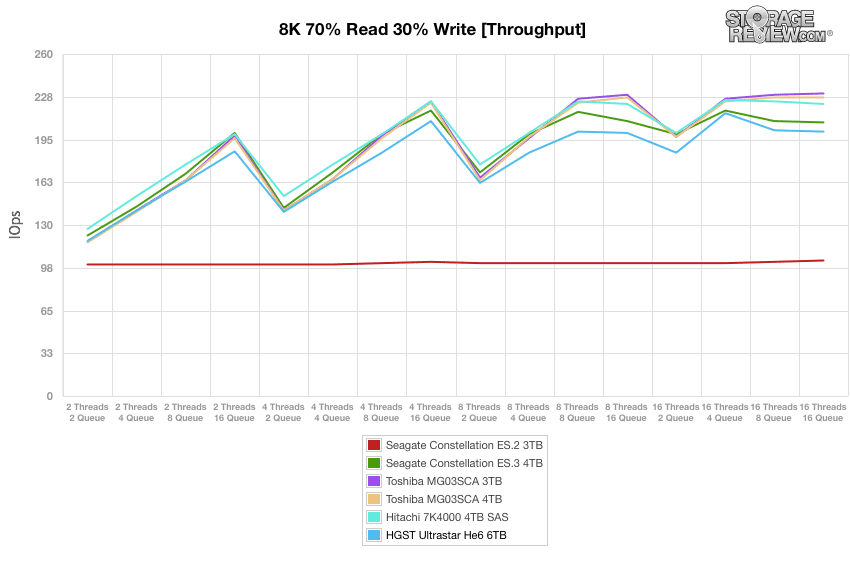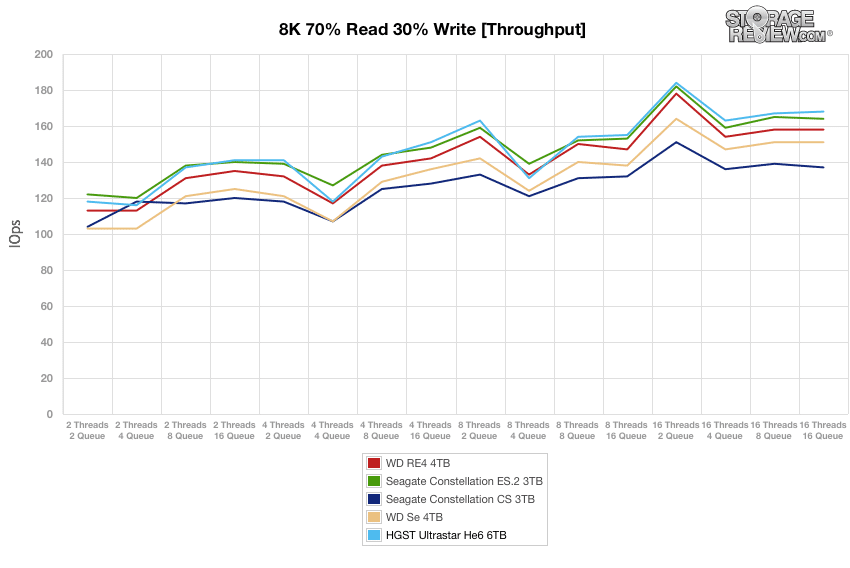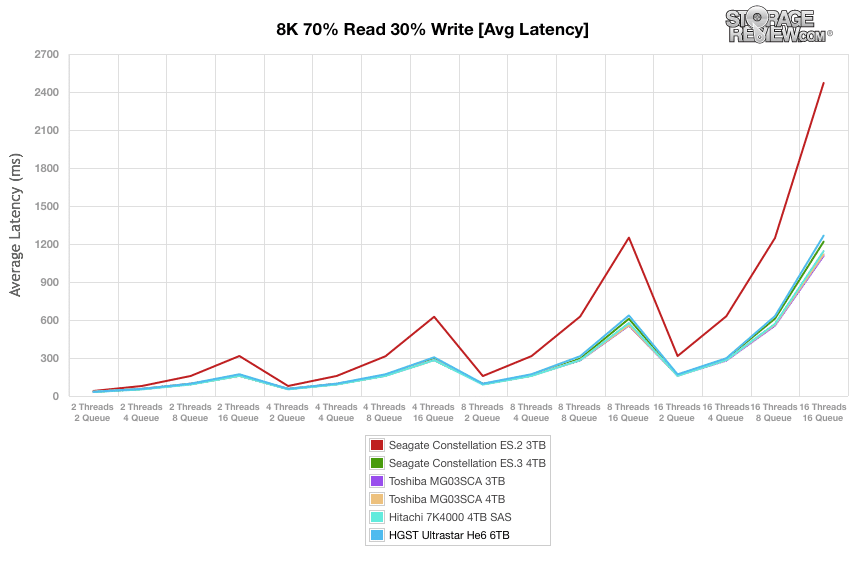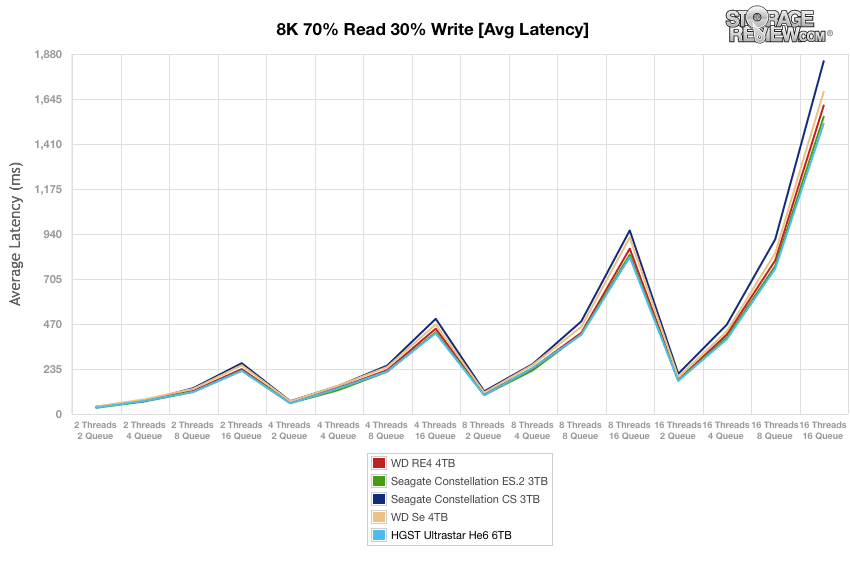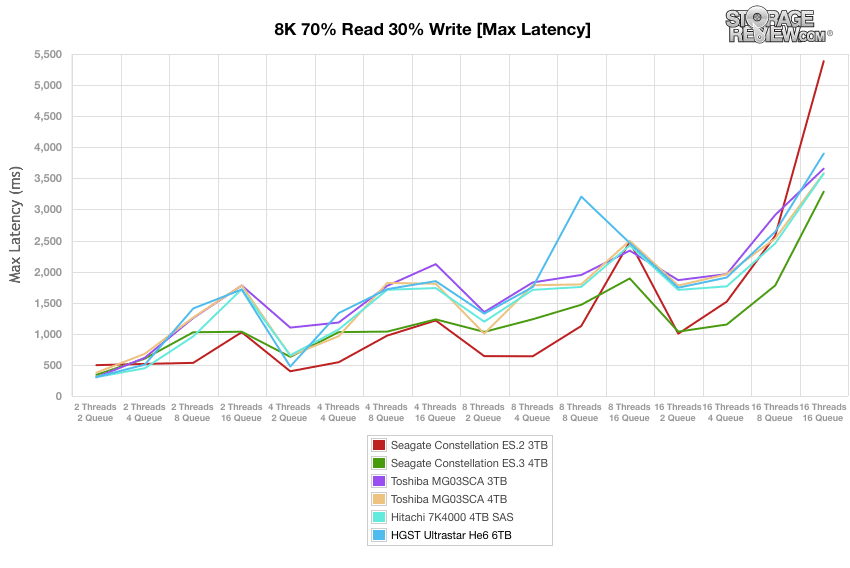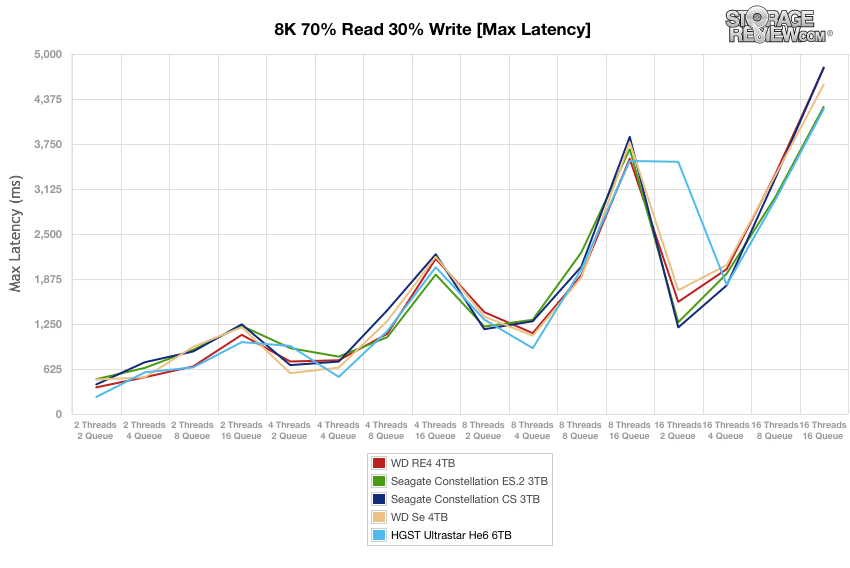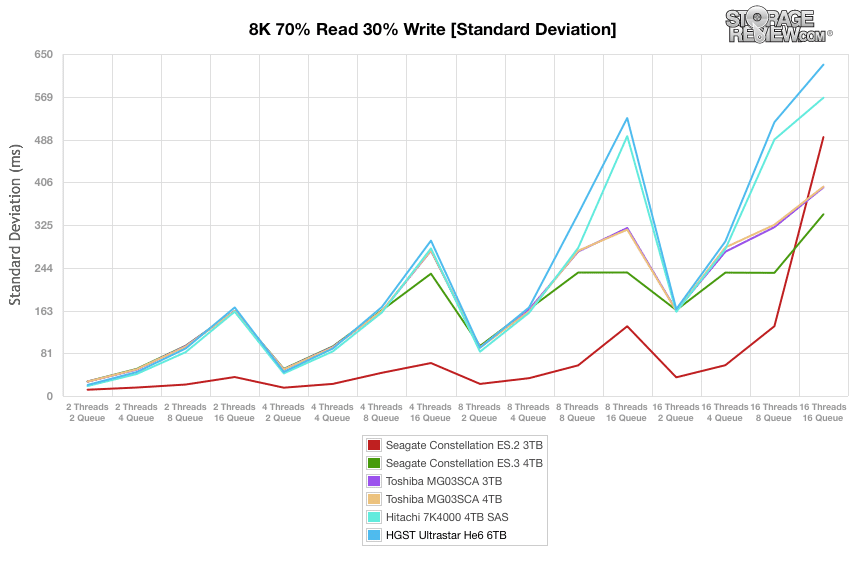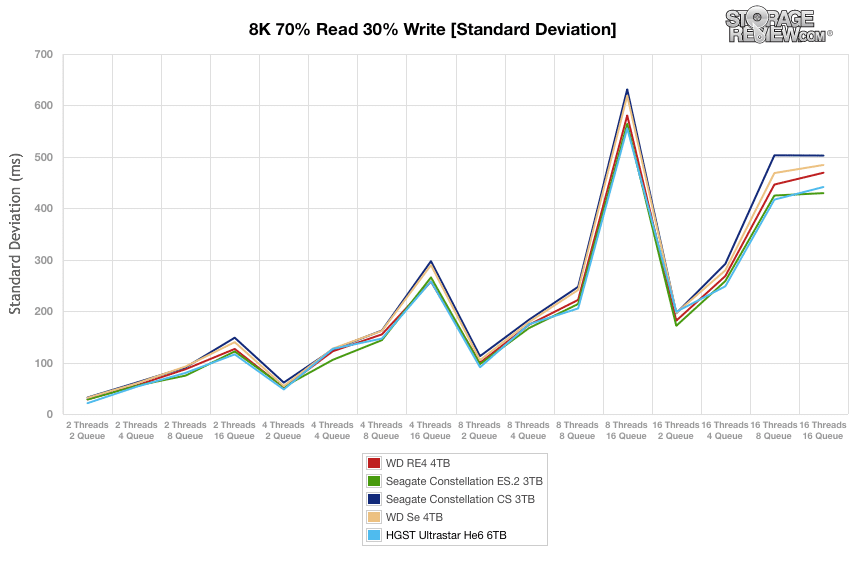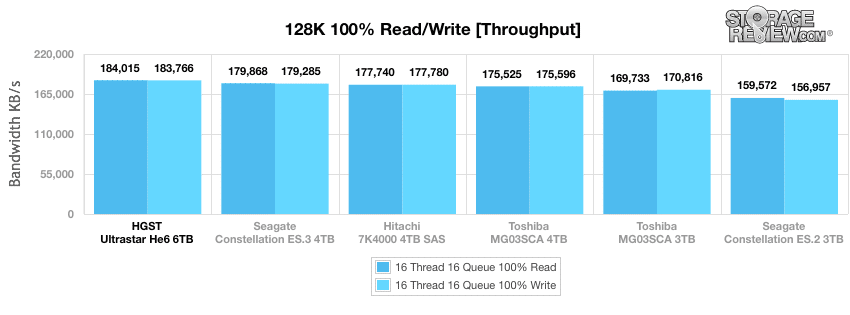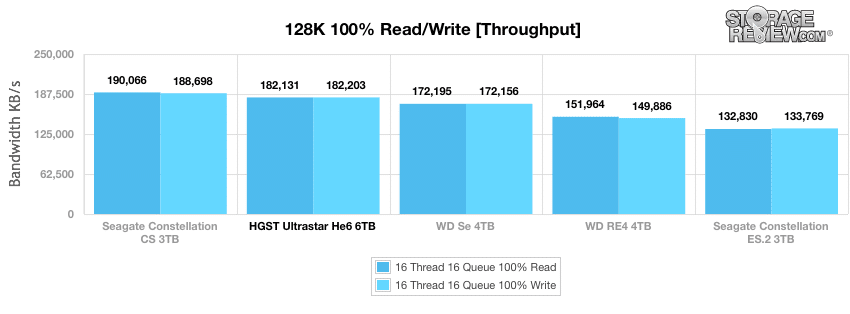
The Ultrastar Helium Platform (He6) hard drive family is HGST’s latest effort to provide the next step up in capacity for enterprises that are faced with ballooning data volumes. The Helium drives are offered at a single 6TB capacity point, which offers a 50% boost over today’s leading 4TB capacity offerings, and they are available with either a SATA or SAS 6Gb/s interface. The drives offer a spindle speed of 7,200RPM, on disk buffer of 64MB and drive sustained throughput of 177MB/s. The fun technology part though is of course the fact that this is a sealed drive, with helium inside for reduced friction. HGST dubs this technology HelioSeal, which essentially reduces air disturbances caused by the disks and heads and allows for more platters to be sandwiched in the standard 3.5″ hard drive form factor. The reduction in friction also means less power is required, 23% less at idle by HGST’s measurements, netting cost of ownership benefits as well. HGST uses 7 platters, compared to four or five in most 4TB drives today, to drive the 6TB capacity in the Helium. Interestingly, this suggests there is more capacity up-side for the platform with more dense platters making Helium potentially a very compelling bridge to the next generation mainstream hard drives that will use HAMR technology (SMR has limited use cases) to increase density and drive capacity.
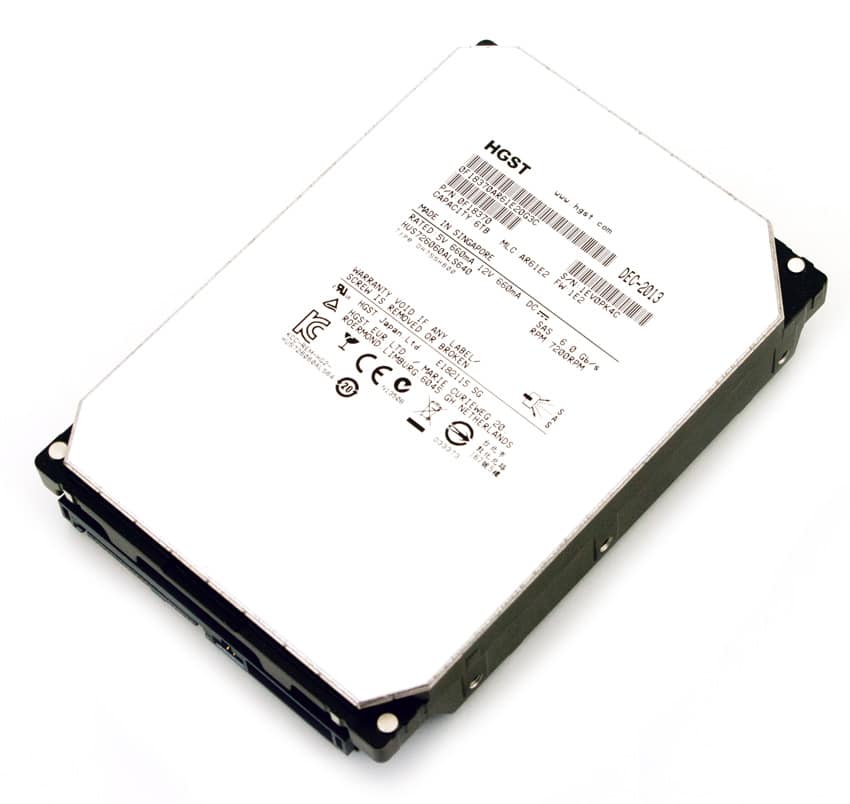
For businesses that have been slow to upgrade current systems, the implications of 6TB are much more meaningful. Often older storage arrays are leveraging 2TB or 3TB hard drives, meaning with the Helium drives, these organizations could be talking about a 2X or 3X storage density improvement in the same rack U count. Of course this isn’t just an HGST benefit, the other vendors are bringing higher capacity drives to market as well, HGST is just the first to ship 6TB hard drives in quantity. Any jump in density though drives quite a bit of financial gains when evaluated on per TB basis. Power consumption improves dramatically per TB, and weight in the data center (important for raised floors) per TB improves as well because of the capacity increase, but also the Helium drives are 50g lighter than five platter drives.
The big question from an HGST perspective though is how fast mainstream storage vendors will qualify and adopt the Helium drives. There’s a school of thought that being new technology, vendors and enterprise users may be reluctant to adopt sealed drives, especially considering all of the other HDD vendors are taking traditional paths (non sealed drives) to 5TB and 6TB hard drives. There’s also the “single-source” argument that seems to be holding less water lately as HDD vendors break away from each other in new and exciting ways, helium included. Those issues are all somewhat mitigated through in the spaces where helium is seen to make a major play. For those who roll their own or operate in a hyperscale/webscale environment the rules of storage deployment are a little different. Helium is here now and ready to go and all of the density and power benefits listed above mean more than the softer objections that the mainstream array vendors will have. HGST also includes their standard five year warranty and 2,000,000 hour MTBF spec with the drives, which is tops in the industry.
The 6TB Helium hard drives are shipping now in both SAS and SATA interfaces. Our review samples include two of each model.
HGST Helium HDD Specifications
- Model
- SAS: HUS726060ALS640 / 0F18370, HUS726060ALS641 / 0F20577
- SATA: HUS726060ALA640 / 0F18335, HUS726060ALA641 / 0F20572
- Interface: SAS 6Gb/s, SATA 6Gb/s
- Capacity (GB): 6TB
- Sector size (variable, Bytes/sector): 512 / 520 / 528 (SAS), 512n (SATA)
- Max Areal Density (Gbits/sq. in.): 544
- Form Factor: 3.5-inch HDD
- Performance:
- Data Buffer (MB): 64
- Rotational Speed (RPM):7200
- Interface transfer rate (MB/sec, max): 600
- Sustained transfer rate (MB/sec, typ.): 177
- Seek Time (read, ms, typical): 8.5
- Reliability:
- Error Rate (non-recoverable, bits read): 1 in 10^15
- MTBF (M hours): 2.0
- Load/Unload Cycles: 600,000
- Availability (hrs/day x days/wk): 24×7
- Reliability – Warranty (yrs): 5
- Idle (Bels): 2.0
- Power
- Requirement: +5 VDC (+/-5%), +12VDC (+/-5%)
- Startup current (A, max): 1.2 (+5V), 2.0 (+12V)
- Read/Write (W, avg): 8.8 (SAS), 7.3 (SATA)
- Active Idle (W, avg): 5.7 (SAS), 5.3 (SATA)
- Unload Idle (W): 4.1 (SAS), 3.7 (SATA)
- Physical size
- Z-Height (mm): 26.1
- Dimensions (width x depth, mm): 101.6(+/-0.25)x147
- Weight (g, max): 640
- Environmental (operating)
- Ambient temperature: 5º to 60ºC
- Shock (half-sine wave): 70
- Vibration (5 to 500Hz): 0.67 (XYZ)
- Environmental (non-operating)
- Ambient temperature: -40º to 70ºC
- Shock (half-sine wave): 300
- Vibration (5 to 500Hz): 1.04 (XYZ)
Design and Build
As we mentioned above, HGST’s uses their unique HelioSeal process, allowing the Ultrastar He6 to be the industry’s first hermetically sealed helium-filled HDD that can be cost-effectively manufactured en mass. Additionally, the helium build enables HGST’s new 7Stac disk design to reach 6TB in capacity, making the industry’s highest capacity HDD with best-in-class TCO for cloud storage as well as massive scale-out environments, disk-to-disk backup, and replicated or RAID environments. The front of the drives has a sticker with basic information on the drive, including the product name, capacity and HGST logo.
Because Helium is a sealed drive technology, the packaging of the drive is different. While most hard drives are components assembled inside a shell that is screwed together, the Helium drives have to be fused together to seal the helium in.
The He6 is much quieter than its air-filled brethren, including the Ultrastar 7K4000, which boasts 2.9bels when idling compared to the He6’s 2bels. Besides being quieter the drive also uses substantially less power than the older 5-platter 7K4000. In our tests we measured idle active power rates of 5.56W on the He6 HDD, while the older drive consumed 7.68W.
Application Performance Analysis
HGST was unable to supply the requisite number of hard drives for application performance testing. Should that situation change in the future, those results will be appended here.
Testing Background and Comparables
SAS Enterprise HDD comparables for this review:
- Seagate Constellation ES.3 4TB
- Seagate Constellation ES.2 3TB
- Toshiba 4TB SAS
- Toshiba 3TB SAS
- Hitachi 7K4000 4TB SAS
SATA Enterprise HDD comparables for this review:
- Western Digital RE4 4TB
- Seagate Constellation ES.2 3TB
- Seagate Constellation CS 3TB
- Western Digital Se 4TB
Enterprise Synthetic Workload Analysis
Our enterprise hard drive benchmark process preconditions each drive into steady-state with the same workload the device will be tested with under a heavy load of 16 threads with an outstanding queue of 16 per thread, and then tested in set intervals in multiple thread/queue depth profiles to show performance under light and heavy usage. Since hard drives reach their rated performance level very quickly, we only graph out the main sections of each test.
Preconditioning and Primary Steady-State Tests:
- Throughput (Read+Write IOPS Aggregate)
- Average Latency (Read+Write Latency Averaged Together)
- Max Latency (Peak Read or Write Latency)
- Latency Standard Deviation (Read+Write Standard Deviation Averaged Together)
Our Enterprise Synthetic Workload Analysis includes four profiles based on real-world tasks. These profiles have been developed to make it easier to compare to our past benchmarks as well as widely-published values such as max 4K read and write speed and 8K 70/30, which is commonly used for enterprise drives.
- 4K
- 100% Read or 100% Write
- 100% 4K
- 8K 70/30
- 70% Read, 30% Write
- 100% 8K
- 128K (Sequential)
- 100% Read or 100% Write
- 100% 128K
In the first of our enterprise workloads, we measured a long sample of random 4k performance with 100% write and 100% read activity to get our peak sustained random I/O results. The Ultrastar He6 SAS ranked in the middle of the pack in the Read column, coming in just ahead of the Seagate Constellation (4TB). In terms of write performance, it came in last.
For the SATA interface, the Ultrastar He6 came in ssecond place for read performance, but finished near the bottom of the pack in write performance, narrowly edging out the last place Seagate Constellation 3TB.
With a heavy effective queue depth of 256 in our random 4K read and write test, the Ultrastar He6 SAS measured an average read and write latency of 1,107.73ms and 1,442.20ms respectively.
The Ultrastar He6 SATA interface performed right at the top of the pack with 1,850.92ms read and 1,443.61 write. The WD RE4 4TB took stop spot for both read and write activity.
Comparing peak response times from each SAS drive, the He6 SAS ranked in the middle of the pack in terms of read atency but came in last place with the highest write latency by a significant margin.
In our SATA line, we measured the He6 near the top of the pack for peak read latency, however it performed poorly in the write column.
Looking at latency consistency with our standard deviation measurement, the He6 SAS came in last place with the highest measurement in both read and write activity.
The He6 SATA interface fared much better in the read column, though the write standard deviation was still high.
Compared to the fixed 16 thread, 16 queue max workload we performed in the 100% 4k write test, our mixed workload profiles scale the performance across a wide range of thread/queue combinations. In these tests, we span workload intensity from 2 threads and 2 queue up to 16 threads and 16 queue. In the expanded 8k 70/30 test, the He6 ranked in bottom the pack, though much higher than the Seagate Constellation 3TB, which basically flat-lined from the beginning.
The He6 SATA interface performed much better, taking top spot with 168IOPS by 16T/16Q.
When measuring average latency from the He6 SAS, we saw response times start at 33.65ms at 2T/2Q and reach 1266.53ms at 16T/16Q, right up there at the top of the pack.
The SATA interface showed a neck-and-neck race till the very end with the He6 SATA scoring the lowest average latency of 1516.51ms by 16T/16Q.
In our peak latency 8k 70/30 workload, the He6 SAS had one of the higher response times reaching 3898.8ms by the end of the test.
The SATA interface fared much better with the lowest peak ms at 4236.21, narrowly beating out the Seagate Constellation 3TB.
Diving into our latency consistency tests, the He6 SAS had the highest standard deviation figures with 629.87ms at 16T16Q.
Once again, the SATA interface version of the He6 performed much better, ranking right at the top of the pack by 16T/16Q with 441.4ms.
Our Enterprise Synthetic Workload 128K test is a large block sequential test that shows the highest sequential transfer speed for a platter drive. Looking at 128K performance of 100% write and 100% read activity, the He6 SAS boasted impressive numbers with 184,015KB/s read and 183,766KB/s write, taking top spot in both categories.
The He6 SATA interface fare much the same with an impressive 182,131KB/s read and 182,203KB/s write.
Conclusion
HGST’s Ultrastar Helium Platform hard drive family–available in both SATA or SAS 6Gb/s interfaces–is a significant step up in capacity for HDDs and are ideal for enterprises that are facing exponential data growth as they are offered at a massive single 6TB capacity point. This is a hefty 50% gain over today’s leading 4TB capacity offerings and would be upwards of two to three times the storage density in the same rack U for those with lower capacity drives, which would allow enterprises and businesses to create much higher-density data centers.
Looking into the performance of the Ultrastar Helium Platform hard drives, we saw middle of the pack performance in all of our enterprise synthetic workloads. In our sequential 128K benchmark, SAS Ultrastar Helium boasted 184MB/s read and 183MB/s write, which moved it to the top of the SAS group. With the SATA version we measured 182MB/s read and write, which came in second to the Seagate Constellation CS. Overall as a 7K model random access isn’t the drive’s strong-suit, although it did compete well against other SATA and SAS HDDs, just not as the top of the pack in most cases.
Even though it’s hard not to recommend Ultrastar Helium Platform hard drives for those that need the added capacity, they are still a new technology without a precedent for comparison and there is no proven track record established yet. Some enterprises users and array vendors may find this a bit risky as a result; however the performance numbers in our benchmarks are somewhat reassuring and HGST offers the highest warranty and MTBF combo in the industry. The only other knock is pricing, at $850 roughly in single unit pricing at the time of this review, the 6TB drives do come with a premium, although as more >4TB models hit the market, those prices should come down.
Pros
- Industry leading capacity
- Strong sequential performance
- Lower power consumption than traditional 7k 4TB HDDs
Cons
- New technology that doesn’t yet have a track record
- High initial price tag
Bottom Line
The HGST Helium hard drives provide a new option when it comes to dealing with the sheer volume of data being accumulated. The Helium drives have a wide range of use cases and don’t drop off from current 4TB drives in terms of performance. Couple this with a strong TCO argument and the 6TB Heliums will find their way into many data centers.
Discuss This Review

